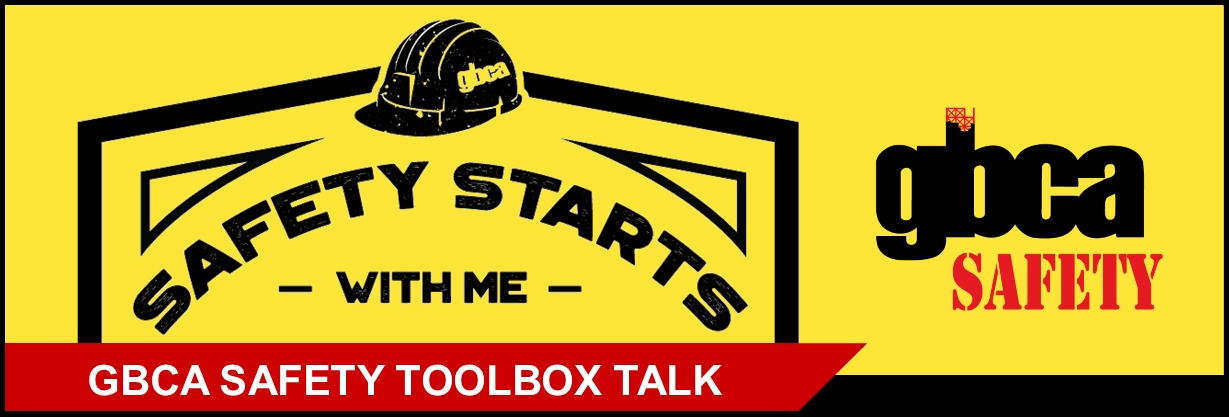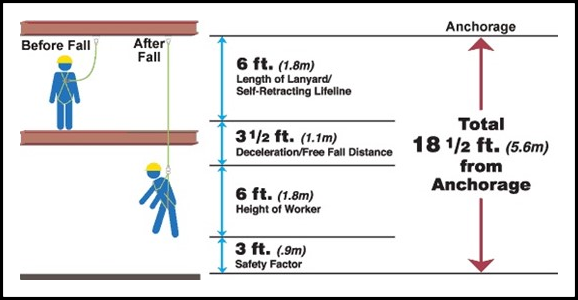This GBCA Toolbox Talk covers how to calculate the correct length for a lanyard, especially when working from heights of eighteen feet or less. Click below to download the Toolbox Talk as a handout (includes Sign-In Sheet).
Six Foot Lanyards at Heights of Eighteen Feet and Less
Whether it’s working from a boom lift, walking steel, or any other height, “tying off” will do no good if your personal fall arrest system allows you to strike the lower level before it stops your fall.
BEING TIED OFF DOESN’T AUTOMATICALLY MEAN THAT YOU’RE SAFE!
Using a 6-foot lanyard, a 6-foot tall worker with less than 18 feet of clearance between the anchor point and the ground WILL impact the lower level. Fall clearance distance is crucial should a fall event occur.
To determine the clearance distance, keep the following measurements in mind:
- Height of the person.
- Length of the lanyard: A 6’ lanyard is actually 9.5’ long when the decelerator is opened.
- Point of attachment (The location of the lanyard’s anchor in reference to the person: above, next to, or below).
- Distance to the lower level from the tie off point.
- 3’ safety factor.
To calculate the clearance distance, add up the measurements (here, we use a 6’ tall worker):
Consider the following questions when working at levels 18 feet and lower between tie off and lower levels:
- Can you relocate the tie-off point higher?
- Can you use a self-retracting lifeline (yo-yo)?
- Can you make it so the worker cannot fall off of the edge (restraint vs. fall arrest)?
- Can you utilize a lift or other device that would eliminate the fall potential?
Remember to record the attendees of your toolbox talk!
Access GBCA’s full library of toolbox talks:







